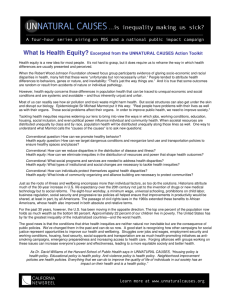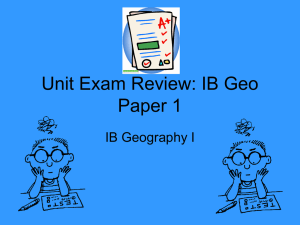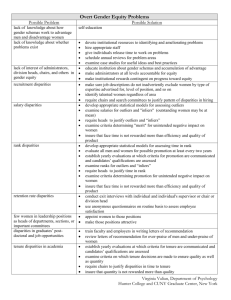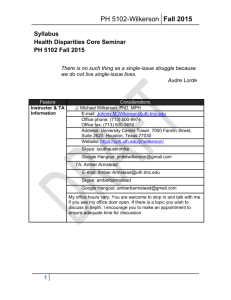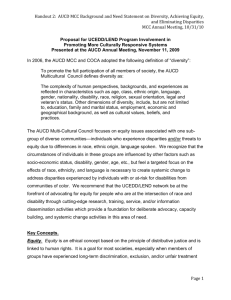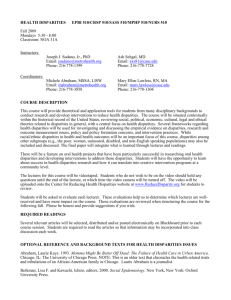UNICEF FRENTE AL PROYECTO DE LEY GENERAL DE
advertisement
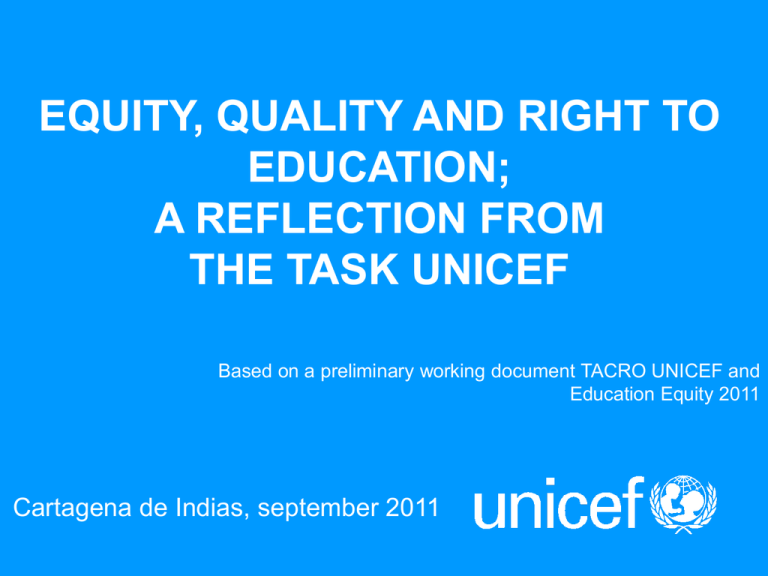
EQUITY, QUALITY AND RIGHT TO EDUCATION; A REFLECTION FROM THE TASK UNICEF Based on a preliminary working document TACRO UNICEF and Education Equity 2011 Cartagena de Indias, september 2011 The right to education in three dimensions (UNESCO/UNICEF,2008) • the right to access and permanence, • the right to quality education – or right to learn • the right to non-discrimination in education involving a review of the 'stellar concepts' (Brasvalvsky, 1999) in the education debate in the last 20 years, namely, equity and quality. EDUCATION AND SOCIAL EQUITY: ¿HOW DOES EDUCATION CONTRIBUTE TO THE COUNTRY’S EQUITY ? • Education saves lives of the poorest boys and girls. • Education is key to escaping poverty and it increases productivity and economic growth: • Education increases democratic governance, equity and social cohesion •Education is a right which enables other rights EQUITY IN EDUCATION: ¿DOES EDUCATION REACH ALL BOYS AND GIRLS, WHILE TAKING INTO ACCOUNT THEIR OWN CHARACTERISTICS? In its basis, the educational inequity is related to social exclusion, and it is manifested by a combined set of deprivations and discriminations which interact. It is to say material deprivations -monetary and no monetaryas well as social capital deficits can coexist, and often overlap, with a wide range of discriminations, such as those based on ethnicity or gender. Areas of inequities Areas of inequities Geographic location The group of belonging Gender Family conditions Other Manifestations of inequity Sub national disparities Urban/rural disparities Ethnic and racial disparities Disparities based on religion. Disparities based on displacements. Disparities in the access to services. Disparities in the quality of services and education outcomes. Household socio-economic disparities Disparities linked to type and structure of families (single parent, women as head of household) Disparities linked to disability Disparities linked to HIV AIDS Disparities linked to early pregnancy in young girls. Forms of inequities in education Not in preprimary school Pre-primary age children Dimension 3 Dimension 2 Dimension 1 Attended but dropped out Will never enter Will enter late Primary age children Attended but dropped out Will never enter Will enter late Lower secondary age children Dimension 4 Dimension 5 At risk of dropping out of primary school At risk of dropping out of lower secondary school Primary school students Out of school In school Lower secondary school students Conceptual and methodological framework Global Initiative on Out of School children UNICEF/UNESCO, 2010 Ejemplo de datos sobre la participación escolar y dimensiones de exclusión Fuente: Marco Conceptual de la iniciativa Global sobre niños/as fuera de la escuela UNICEF/UNESCO, 2010 AN APPROPRIATE CONCEPT OF QUALITY Defining Quality in Education, Working paper series education section UNICEF, 2000 IMPLICATIONS FOR POLICY Guidance • Education as fundamental right • Education as a public good, with an high return • The aims of Education • Guaranteeing the right to education under all circumstances Strategy • Reduce deprivations and overcome discriminations • Universal policies with attention to exclusion THANKS Daniel Contreras dcontreras@unicef.org

